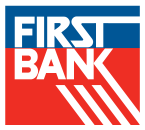With technology changing at such a fast pace, it can be difficult to keep up with ever-changing fraud schemes, scams, and various regulations. The 2018 AFP Payments Fraud Survey1 uncovered some alarming numbers; fraud hit a record high in 2017 with 78% of all organizations being affected by payment fraud. Check fraud continues to be the number one form in which payment fraud is attempted with 74% of respondents reporting this as an issue.
Unfortunately, check fraud remains prevalent due to advanced technology making it easy for criminals to replicate your checks. As scams become more sophisticated, so does check fraud; all an offender needs is a valid account number and printing software to wreak havoc on your business’ finances. While modern technology creates more intricate forms of check fraud, the leading scheme involves fake checks.
Businesses are a hot target for criminals and are likely victims of fraud due to the amount of checks written for vendors, bill payments and more. In a 2016 American Bankers Association2 survey, 22% of banks reported losses due to small businesses falling victim to fake check fraud – up 14% from previous years. Furthermore, a 2018 Better Business Bureau3 survey reports that fake check fraud is among the top five scams that affect small and independently-owned businesses.
Luckily, organizations can stay protected and have insurance against check fraud with Positive Pay. This service helps protect against fraudulent check activity before it even occurs. Positive Pay detects fraudulent checks at the point of presentment and is then systematically cross-referenced with the information in the client’s issue file at the bank.
How Positive Pay Works
Setting up Positive Pay is easy – here’s how it works:
- Create a data file: Clients must initially provide the bank with a file containing the check register information such as check numbers, payee amount, payee name (optional), date, and account number. As checks are written, an online data file is created. Upon writing checks, you will electronically send your bank your issue data file.
- Checks are verified: At this stage, your issue data is cross-referenced with the checks that have posted to your account. If the clearing check matches the information provided, the check is considered verified and the bank will pay the check. If something doesn’t match, however, the bank will give you the opportunity to view the information and decide if you want to pay or return the item. This means any checks with altered payment amounts or names, or those that came from stolen check stock are flagged by the bank. Checks that do not match the issue file become Positive Pay Exceptions.
- Exceptions Report is sent: Exceptions are easy to manage and images of the check(s) are available online.
- You choose the payment decision of each check: You can make all payment decisions online, whether you choose a pay or no-pay option. If no decision is received by the bank prior to their set deadline, exception items are processed according to the default decision (Pay or Return) set by the client configured at launch.
Positive Pay is an easy and effective system to mitigate and defend against check fraud. A business owner would never leave their property unprotected – and protecting the businesses’ finances and assets is equally as important. Protect your checking account from unauthorized access and gain some peace of mind with the Positive Pay system. To learn more about how Positive Pay can help protect your business accounts, or for more information on how First Bank can assist with protection against payment fraud, contact our Treasury Management team.
1Source: AFPonline.org, Association for Financial Professionals
2Source: American Bankers Association, “Banks Stop $17 Billion in Fraud Attempts in 2016
3Source: Better Business Bureau, “Don't Cash That Check: BBB Study Shows How Fake Check Scams Bait Consumers”


